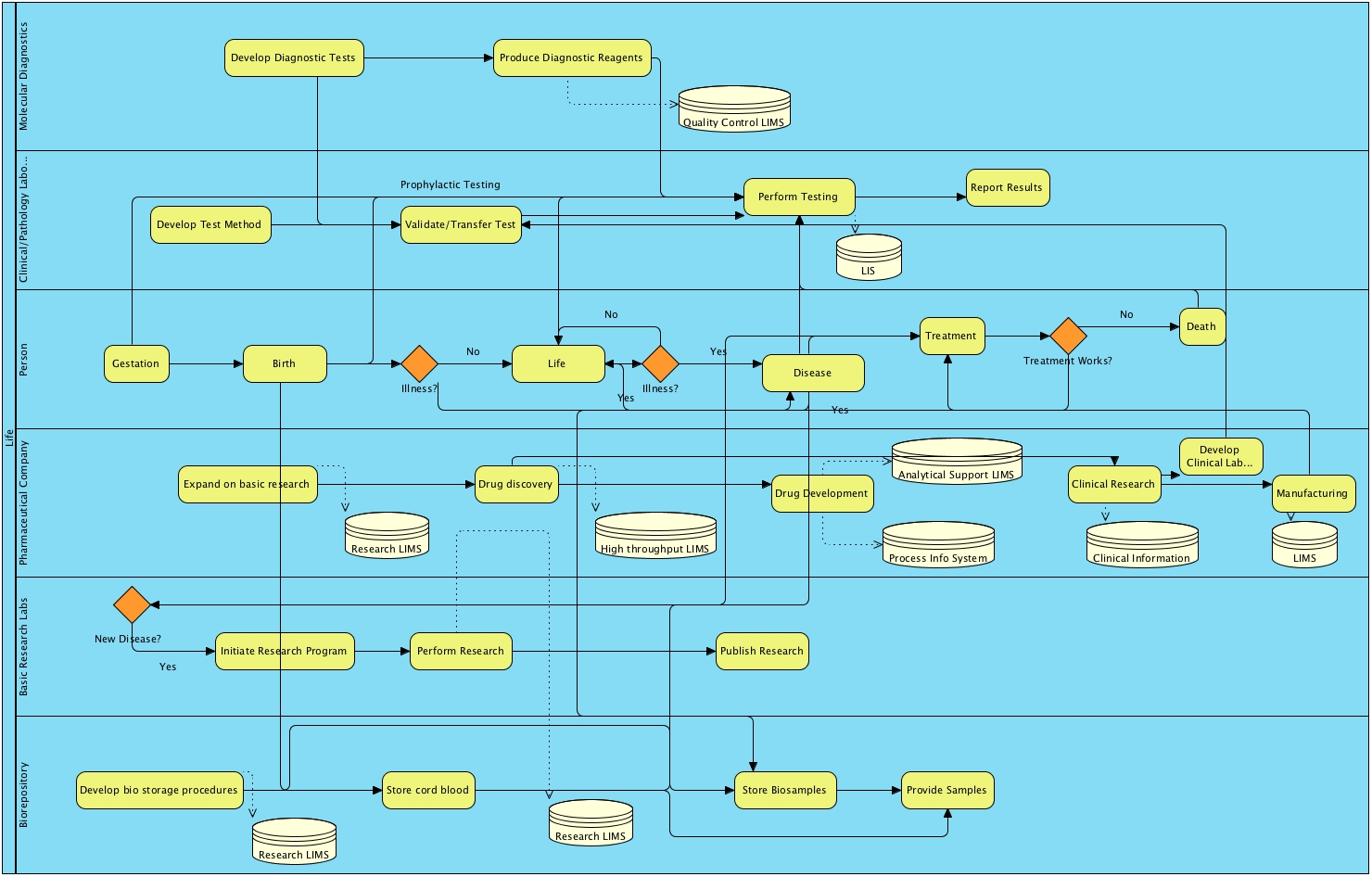Life sciences life cycle
Viewing the life sciences industry from the perspective of a human lifeline
The life sciences industry encompasses such a broad array of industries, that it is sometimes useful to approach exploring the industry from the perspective of our life and how these industries impact our lives from before we are born, until the day we die.
From conception to birth
With the significant advances being made in the area of infertility treatment, the life sciences industry can, at times, affect the beginning of our life in ways that never were the case in an earlier era. The advances, themselves, have been influenced by basic research laboratories, utilizing samples taken not only from clinical environments, but received from biorepositories of various sorts. Once a process has been developed, the practitioner then sends samples from their patients to clinical laboratories for analysis to guide the application of the infertility treatment.
In addition, a significant battery of prenatal tests are routinely performed, at least within first world countries. From ultrasounds to maternal blood tests to amniocentesis, the diagnostic and clinical laboratory industry is kept busy with supporting us in our earliest days.
A normal healthy life
Even in the event that one has a completely uneventful, and healthy life, you will still have interactions with the life sciences industry. Most children undergo routine physicals which might entail preventative diagnostic tests. In addition, most children receive a routine set of vaccinations. Vaccines, of course, are produced by pharmaceutical companies, and require research, process development and manufacturing support and QC laboratories before they are ever administered.
Even as we grow into adulthood, and particularly as we grow older in adulthood, diagnostic testing is a routine part of our lives. As the field of genomics has grown, some of these tests include genetic tests looking for increased risk of certain forms of cancer. For instance, the presence of certain mutations of the BRCA1 and BRCA2 genes, along with a significant family history can be a strong indictor of risk of either breast cancer or ovarian cancer. In some cases, women decide to undergo prophylactic surgeries - which in turn means that samples might find their way into the biorepositories and cancer research labs, as well as to pathology labs.
When disease strikes
In the event disease strikes us, whether caused by infection, genetic mutation, accident, or just aging, we interact with a number of elements of the life sciences industry that have been at work long before we needed them. Unless our disease is unique to us, there has undoubtedly been a significant amount of research, diagnostic development, drug development and the like.
Typically, our doctor would take samples, such as blood samples, throat swabs, or biopsies, and send them to clinical and pathology laboratories for analysis. Increasingly, such analysis is becoming much more sophisticated, with many tests looking for specific molecular markers that can be used to guide treatment decisions. Certain companies have developed the capacity to provide highly tailored treatment recommendations to physicians for specific diseases - in particular certain forms of cancer.
Treatment options
Once a treatment approach has been decided upon, then treatment begins, frequently with an ongoing monitoring process to ensure that the treatment is progressing as expected. As the complexity of drugs being used increases, along with the growing complexity of diseases which we are capable of treating, monitoring also involves watching for possible adverse events. A well known case of this has to do with Tysabri, a monoclonal antibody produced by Biogen Idec. Owing to the interaction of the antibody with the immune system, a small number of cases of a severe viral brain disease have occurred. This disease is caused by one of the many nearly ubiquitous viruses found in humans. In the event that a Tysabri recipient starts showing signs of the disease, treatment is halted and special processes are applied to flush the remaining drug out of the system.
End of life
Even after we have died, we are not necessarily done with the life sciences industry. Pathology laboratories might become involved, should uncertainty exist about the exact cause of death. As well, tissue samples may be provided to biorepositories and research laboratories.
Other Industries
Of course we can expand this approach to all other industries. Agriculture provides our morning eggs, toast and coffee (or power bar and Red Bull), the petroleum industry provides the fuel we use to get to work (or the rubber in our bicycle tires), as well as plastics for the computers at our offices and labs. Forensics labs help the police keep our communities safe by aiding in the investigation of crimes, and environmental laboratories monitor the world around us, ensuring that we don’t expose ourselves unnecessarily to toxins nor damage it overmuch.










